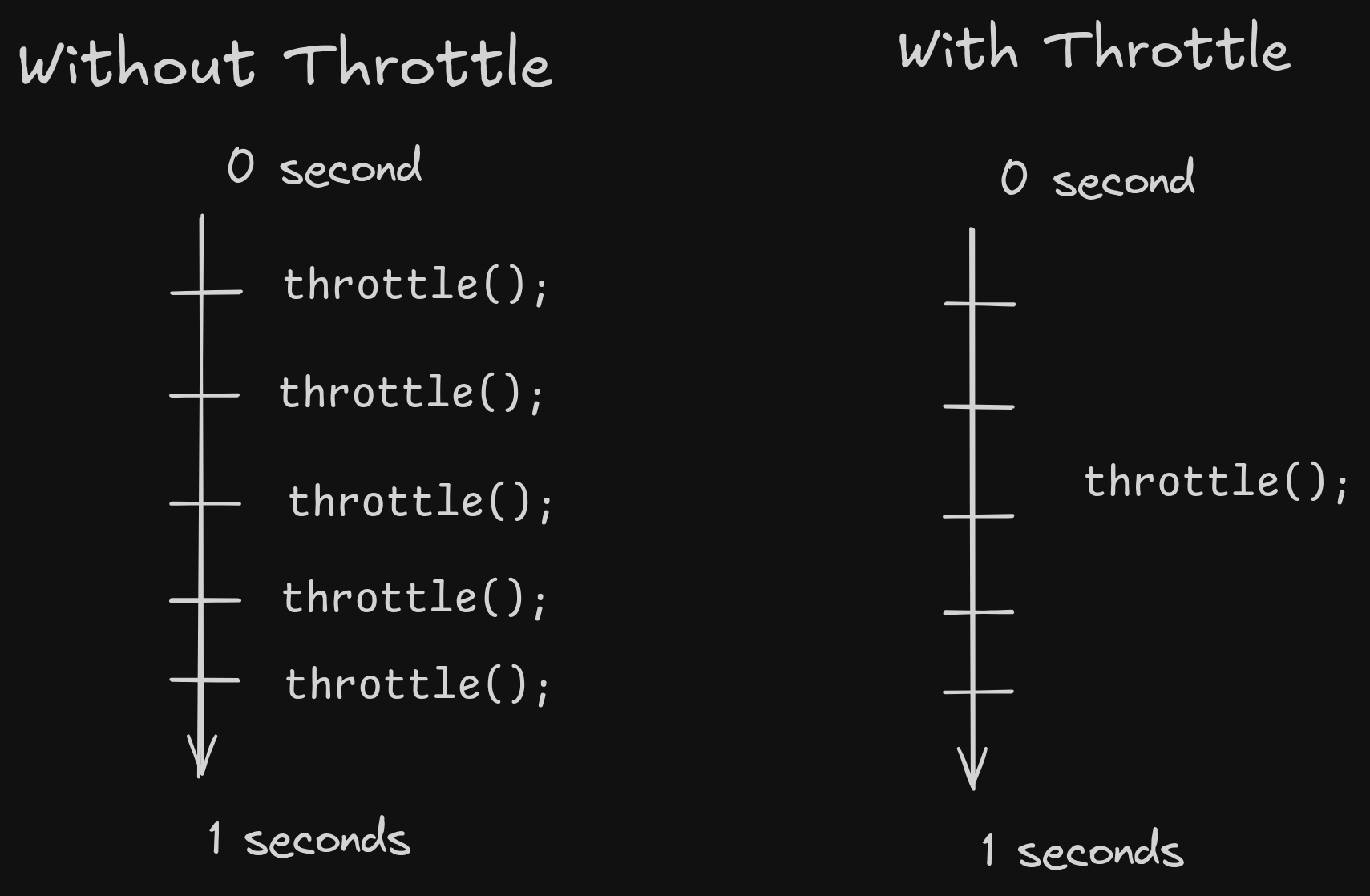Throttle Explained: Optimizing Performance by Controlling Function Executions
 Sunil Khadka
Sunil Khadka
Throttling is a technique used to rate the limit at which a function executes. The philosophy of throttling is to execute a function at most once within a specified interval of time. Meaning, it will restrict a function to execute more than once within a specified interval of time.
Let’s say we want to run a function when user types something. We are basically listening to an input event but look at the frequency at which a function may execute with and without throttle in a second.

How to Throttle a Function
Create a function that needs to be throttled. This function should accept a callback and a delay.
Create a
flagvariable inside that function which will turn on and off every set interval of time. Initializelet flag = false;This function should return a new function which closes over the
flagvariable.Create a
setTimeoutthat should execute the callback within a certain delay.Check if the
flag(wait) variable isfalse. If so, turn it totrueand run thesetTimout. After the specified delay, turn theflagvariable tofalse. This should allow the callback function to be executed again once the delay has been completed.
Here’s a simple code example:
index.html
<input type="text" placeholder="start typing..." id="input" />
<p>Output: <span id="output"></span></p>
script.js
const input = document.getElementById("input");
const output = document.getElementById("output");
function throttle(cb, delay = 1000) {
let wait = false;
return (text) => {
if(!wait) {
wait = true;
setTimeout(() => {
cb(text);
wait = false;
}, delay)
}
}
}
const throttleEventHandler = throttle((text) => {
output.innerText = text;
})
input.addEventListener("input", (e) => {
throttleEventHandler(e.target.value);
})
Use Cases
Scroll-based animations: Throttle the animation function to ensure it’s only called once every 100ms, regardless of how fast the user scrolls, to maintain a smooth and responsive experience.
Real Time Updates: Throttle updates to prevent overwhelming the server with too many requests in a short period. For example, a live chat app might throttle its update requests to ensure it doesn’t send more than one request per second.
API request limiting: Throttle API requests to prevent overwhelming the server with too many requests in a short period. For example, a weather app might throttle its API calls to ensure it doesn’t send more than one request per second.
Image loading: Throttle image loading to prevent overwhelming the browser with too many concurrent requests. This ensures a smoother user experience and reduces the risk of browser crashes.
Use Activity Tracking: Tracking every event in real-time can quickly overload both the client and server with data. Throttling events like mouse movement or typing to every 200ms, for instance, reduces data volume while still providing a meaningful activity history.
Subscribe to my newsletter
Read articles from Sunil Khadka directly inside your inbox. Subscribe to the newsletter, and don't miss out.
Written by

Sunil Khadka
Sunil Khadka
I am a Full-Stack Engineer with more than 2 years of experience building complex web applications. I use React.js and Golang for frontend and backend development. There's nothing like one size fits all and I try to learn as many new technologies as possible.